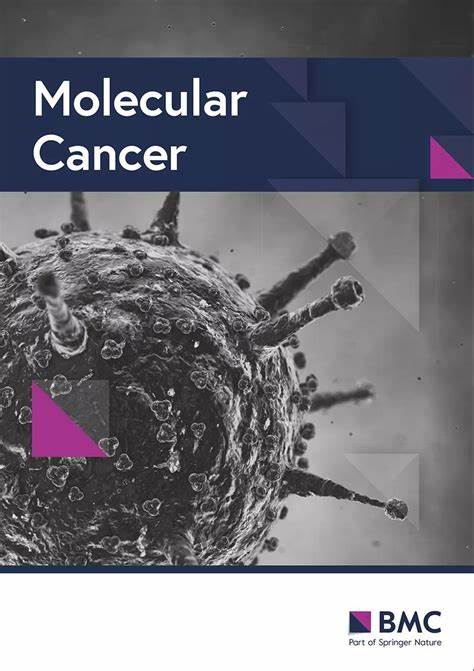Reprogramming cellular senescence and aging clocks for advanced cancer immunotherapy
IF 33.9
1区 医学
Q1 BIOCHEMISTRY & MOLECULAR BIOLOGY
引用次数: 0
Abstract
Cellular senescence has gradually been recognized as a key process, which not only inhibits the occurrence of early tumors but also promotes advanced malignant progression through secretory and immunomodulatory functions. Initially, cellular senescence manifested as irreversible cell cycle arrest, but now it encompasses a broader phenotype regulated by the p53-p21CIP1 and p16INK4A-Rb pathways. Although secretory phenotypes related to aging can recruit immune effectors to clear new tumor cells, persistent senescent cell populations often trigger chronic inflammation, promoting immune escape and fibrosis. In this review, we first discuss the molecular underpinnings of cellular senescence, highlighting its induction pathways and diverse physiological or pathological roles. We then examine the composition of the tumor microenvironment, where senescent cells accumulate and secrete pro-inflammatory cytokines, reshaping immune surveillance and extracellular matrix architecture. Against this backdrop, we explore how aging clocks refine our understanding of individual susceptibility to malignancy by distinguishing biological from chronological aging. We also present current therapeutic prospects, including senolytic agents targeting senescent stromal cells that promote tumor growth, and the utilization of aging clock metrics to tailor immunotherapies more effectively for older patients. Finally, we consider the major challenges facing clinical translation, from standardizing multi-omics data pipelines to clarifying the ethical implications of measuring biological age. By bridging senescence biology with geroscience and cutting-edge oncology, we posit that aging clocks may catalyze a transformation in cancer care, enabling more personalized, effective, and age-conscious treatment strategies.重编程细胞衰老和衰老时钟用于晚期癌症免疫治疗
细胞衰老逐渐被认为是一个关键的过程,它不仅抑制肿瘤的早期发生,而且通过分泌和免疫调节功能促进恶性进展。最初,细胞衰老表现为不可逆的细胞周期停滞,但现在它包括由p53-p21CIP1和p16INK4A-Rb途径调节的更广泛的表型。尽管与衰老相关的分泌表型可以招募免疫效应物清除新的肿瘤细胞,但持续衰老的细胞群经常引发慢性炎症,促进免疫逃逸和纤维化。在这篇综述中,我们首先讨论了细胞衰老的分子基础,强调了其诱导途径和多种生理或病理作用。然后,我们研究了肿瘤微环境的组成,其中衰老细胞积累和分泌促炎细胞因子,重塑免疫监视和细胞外基质结构。在此背景下,我们探索衰老时钟如何通过区分生物衰老和时间衰老来改善我们对个体恶性肿瘤易感性的理解。我们还介绍了目前的治疗前景,包括针对促进肿瘤生长的衰老基质细胞的抗衰老药物,以及利用衰老时钟指标更有效地为老年患者量身定制免疫疗法。最后,我们考虑了临床翻译面临的主要挑战,从标准化多组学数据管道到澄清测量生物年龄的伦理影响。通过将衰老生物学与老年科学和前沿肿瘤学相结合,我们认为衰老时钟可能会催化癌症治疗的转变,从而实现更个性化、更有效、更有年龄意识的治疗策略。
本文章由计算机程序翻译,如有差异,请以英文原文为准。
求助全文
约1分钟内获得全文
求助全文
来源期刊

Molecular Cancer
医学-生化与分子生物学
CiteScore
54.90
自引率
2.70%
发文量
224
审稿时长
2 months
期刊介绍:
Molecular Cancer is a platform that encourages the exchange of ideas and discoveries in the field of cancer research, particularly focusing on the molecular aspects. Our goal is to facilitate discussions and provide insights into various areas of cancer and related biomedical science. We welcome articles from basic, translational, and clinical research that contribute to the advancement of understanding, prevention, diagnosis, and treatment of cancer.
The scope of topics covered in Molecular Cancer is diverse and inclusive. These include, but are not limited to, cell and tumor biology, angiogenesis, utilizing animal models, understanding metastasis, exploring cancer antigens and the immune response, investigating cellular signaling and molecular biology, examining epidemiology, genetic and molecular profiling of cancer, identifying molecular targets, studying cancer stem cells, exploring DNA damage and repair mechanisms, analyzing cell cycle regulation, investigating apoptosis, exploring molecular virology, and evaluating vaccine and antibody-based cancer therapies.
Molecular Cancer serves as an important platform for sharing exciting discoveries in cancer-related research. It offers an unparalleled opportunity to communicate information to both specialists and the general public. The online presence of Molecular Cancer enables immediate publication of accepted articles and facilitates the presentation of large datasets and supplementary information. This ensures that new research is efficiently and rapidly disseminated to the scientific community.
 求助内容:
求助内容: 应助结果提醒方式:
应助结果提醒方式:


